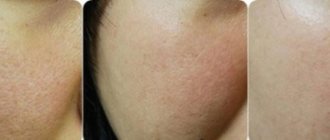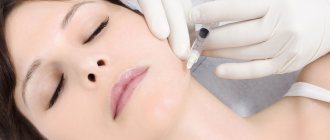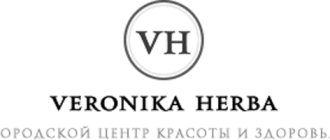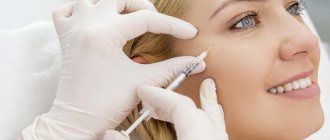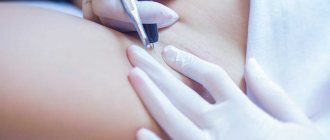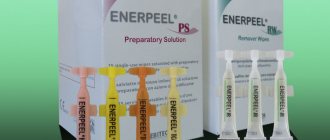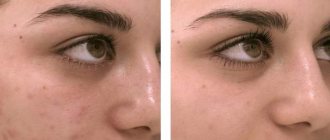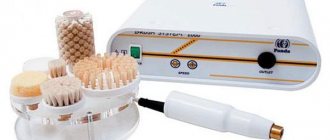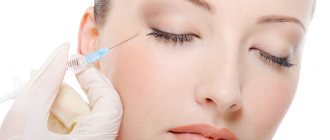Abstract
Carboxytherapy - carbon dioxide (CO2) therapy has been used in rehabilitation for many years; relatively recently this technique came to aesthetic medicine. CO2 is a systemic and local regulator; one of the main effects of increasing CO2 concentration in tissues is vasodilation, increased perfusion and oxygen release. Invasive methods of carboxytherapy in cosmetology are being replaced by non-invasive ones. The high efficiency and safety of non-invasive cartboxytherapy using the geneO+ device has been confirmed.
KEY WORDS: carboxytherapy, oxygenation, CO2, rejuvenation, geneO+, oxygeneo
Current trends in the aesthetic medicine market have changed the approach to face and body correction. Now patients want to look well-groomed without visible signs of cosmetic or surgical intervention. It is this image that is an indicator of health, well-being and social success.
Recreating harmonious body contours and facial features is gradually becoming a kind of “investment project” for patients, where the need for each procedure must be strictly justified. Against this background, there is a growing demand for non-invasive interventions that, in the language of advertising brochures, “make a person younger without pain and fear.”
This is partly true - many such methods are devoid of unpleasant sensations, and the rehabilitation period after them is reduced to a minimum or absent altogether. One of the options for non-invasive rejuvenation is carboxytherapy.
Prices for our services
| Name of procedure (zone) | Time | Cost, rub.) |
| Face / lymphatic drainage and lifting / mesotherapy technique | 30 | 4000 |
| Face + neck / lymphatic drainage and lifting / mesotherapy technique | 30 | 5000 |
| Face + neck + décolleté / lymphatic drainage and lifting / mesotherapy technique | 30 | 6000 |
| Periorbital rejuvenation /area around the eyes/ | 30 | 1500 |
| Liporeduction of the chin area | 30 | 2000 |
Leave a request for an appointment or consultation
Carboxytherapy: indications for use
Carboxytherapy involves the use of carbon dioxide for various therapeutic purposes [1]. Today, attention to this method has grown significantly, since it is the most physiological, highly effective and safe.
Carboxytherapy has various effects, the severity of which depends not least on the method of administering carbon dioxide (inhalation, injection or transdermally), namely:
- analgesic;
- antispasmodic;
- trophostimulating;
- plastic metabolic;
- lipolytic;
- cardiotonic;
- hypotensive.
In clinical medicine, this method is used for the following diseases and pathological conditions [2]:
- acute and chronic back pain;
- headaches, incl. migraine;
- diseases of the leg joints, diabetic angiopathy;
- obliterating atherosclerosis, varicose veins;
- lymphatic and venous edema;
- arterial hypertension stage 1–2. beyond exacerbation; ischemic heart disease with a stable course;
- vegetative-vascular dystonia;
- sleep disorders;
- various dermatological pathologies (psoriasis, alopecia, scars);
- complex therapy of obesity;
- rehabilitation after injuries and operations;
- varicose veins with signs of chronic venous insufficiency;
- diabetic ulcers;
- postoperative and post-traumatic wounds;
- acrocyanosis;
- scleroderma.
In aesthetic medicine, carboxytherapy is actively used in the following cases [2]:
- signs of photo- and chronoaging of the skin;
- static and dynamic wrinkles;
- insufficient tone and elasticity of the skin;
- gynoid lipodystrophy (cellulite);
- stretch marks, scars;
- keloid scars.
Thus, the capabilities of modern devices for carboxytherapy are great. However, the healing properties of carbon dioxide were noticed a long time ago - back in the days of Ancient Greece.
Side effects and contraindications
While safe, the procedure has contraindications:
- Not performed for arterial hypertension;
- Not carried out if there are skin infections and inflammatory processes in the treatment area;
- Not for pregnant and lactating women;
- It is carried out only after completing a course of anticoagulants or requires temporary cessation of their use;
- Not performed for bleeding disorders.
Rarely, carboxytherapy may cause side effects:
- Redness and slight swelling of the skin at the injection sites, which disappear quickly;
- Sensations of pain, burning in the injection area.
After the procedure, the following precautions should be observed:
- During the first few days, do not visit the sauna, bathhouse, solarium, or swimming pool;
- Avoid hypothermia and overheating of injection sites.
For more detailed advice regarding carboxytherapy, please contact cosmetologists at the Clinic on Komarova.
History of carboxytherapy
Hippocrates (460–370 BC) is considered one of the first balneotherapists, who prescribed baths in springs enriched with carbon dioxide for his patients with dermatological and other diseases [3]. His recommendations also included dosed drinking of water with CO2 [4].
At the turn of the XVII–XVII centuries. independently of each other, Robert Boyle (1627–1691) and Antoine Lavoisier (1743–1794) established the antibacterial properties of carbon dioxide [4]. Today they are confirmed by various studies - for example, one of them noted the inhibitory effect of pure CO2 on the growth of Staphylococcus aureus (Staphylococcus aureus) [5].
The further history of the use of carbon dioxide is directly related to spa medicine. Thus, in 1932, patients of the Parisian Royat spa began to be offered an unusual service - subcutaneous injection of CO2 [6]. At that time, this method was used to treat obliterating arteriopathy.
Later studies showed an improvement in microcirculatory parameters during this therapy, which was confirmed by Doppler scanning, laser Doppler flowmetry and transcutaneous measurement of partial pressure of oxygen [6]. Histological analysis recorded a local decrease in adipocytes, which was noticed by specialists from the Institute of Plastic Surgery of the University of Siena (Italy). They found that under the influence of CO2, cellulite skin smoothes [6].
The study of carbon dioxide at the University of Siena has advanced so far that since 2006 a separate course on carboxytherapy has been taught here [4]. In one of the recent works of his employees, the lipolytic properties of CO2, smoothing the skin and increasing its elasticity, along with the absence of significant undesirable effects, were once again shown [6].
Carboxytherapy has proven its effectiveness and safety over a long history in general clinical and aesthetic medicine. Before discussing the principle of operation of this method, it is necessary to say a few words about carbon dioxide and the physiology of respiration.
PROPERTIES OF CARBON DIOXIDE
Carbon dioxide (CO2) is a colorless gas that is 1.5 times heavier than air. It has virtually no odor, although in high concentrations it smells like sweet carbonated water. At atmospheric pressure, carbon dioxide immediately changes from a solid state to a gaseous state, bypassing the liquid stage - this process is called sublimation. The average concentration of CO2 in the atmosphere is about 0.04%.
Rice. 1. The area where central chemoreceptors are located in the medulla oblongata.
Carbon dioxide has a significant impact on physiological processes in the body. Its main effects:
- Regulates blood flow, being a strong vasodilator. Normally, the partial pressure of CO2 (pCO2) is 40 mmHg. Art. As it grows, the capillaries expand, which is expressed in increased local blood circulation, activation of the flow of oxygen and the removal of excess carbon dioxide. However, a lack of carbon dioxide also has a negative effect on the body. So, with a decrease in pCO2 by only 1 mm Hg. Art. cerebral blood flow decreases by 3–4%, and cardiac output by 0.6–2.4%.
- Strengthens muscle contractions. Carbon dioxide in elevated (but not toxic) concentrations has a positive ino- and chronotropic effect on the myocardium. It increases its sensitivity to adrenaline, which leads to an increase in the strength and frequency of heart contractions, cardiac output and, as a consequence, stroke and minute blood volume. This is a protective mechanism that is designed to eliminate emerging tissue hypoxia and hypercapnia.
- Affects the release of oxygen from oxyhemoglobin. As the concentration of carbon dioxide increases, the dissociation of oxyhemoglobin increases (the so-called Verigo-Bohr effect, which will be discussed below). On the contrary, with a decrease in pCO2 in the alveolar air and blood, the affinity of oxygen for hemoglobin increases, which complicates the transition of O from capillaries to tissues.
- Regulates acidity (pH). As a result of a series of chemical reactions (they will also be discussed below), hydrogen ions (H+) are formed, which shift the pH value to the acidic side.
- Affects the respiratory center , which is more sensitive to a lack of carbon dioxide than oxygen.
Rice. 2. Scheme of transport of oxygen and carbon dioxide in the body [8]
To capture carbon dioxide in the body, there are several types of receptors - central and peripheral.
Central chemoreceptors (medullary) are located in the rostral parts of the ventral respiratory group, in the structures of the locus coeruleus, in the reticular nuclei of the raphe of the brain stem (Fig. 1) [7]. They react to hydrogen ions (H+) in the intercellular fluid of the brain surrounding them. An increase in ventilation of the lungs when central chemoreceptors are stimulated by hydrogen ions is called the central chemoreflex, which has a pronounced effect on breathing.
Thus, in response to a decrease in the acidity (pH) of the extracellular fluid of the brain in the area where the receptors are located by 0.01, pulmonary ventilation increases by an average of 4.0 l/min. However, central chemoreceptors respond slowly to changes in pCO2 in arterial blood, which is due to their distance from large vessels. Peripheral receptors cope better with this task.
Peripheral chemoreceptors (arterial) are located in the carotid bodies in the bifurcation of the common carotid arteries and in the aortic bodies in the area of the aortic arch. They respond to changes not only in the concentration of H+, but also in the partial pressure of oxygen in arterial blood. Peripheral chemoreceptors are also sensitive to anaerobic metabolites, which are formed in the tissue of carotid bodies when there is a lack of oxygen.
CO2 TRANSPORT
Breathing ensures that oxygen enters the body and carbon dioxide is removed from it. Conventionally, it can be divided into several stages:
- External breathing - pulmonary ventilation.
- Gas exchange in the lungs is between the alveoli and small vessels of the pulmonary circulation.
- Transport of gases by blood - from the pulmonary circulation, bypassing the heart, into the systemic circulation.
- Gas exchange in tissues is between the vessels of the systemic circulation and cells.
- Internal respiration is an intracellular process in mitochondria.
The transport of oxygen and carbon dioxide is shown schematically in Fig. 2 [8].
Within the framework of this article, tissue gas exchange is of greatest interest. Normally, hemoglobin binds with oxygen in the pulmonary capillaries, transforming into oxyhemoglobin, and releases it into the tissue, returning to its original state. As oxygen diffuses into the tissue, its tension in the blood decreases, and carbon dioxide increases (Fig. 3) [9].
Rice. 3. Oxyhemoglobin dissociation curves:
A - at the same temperature (37°C) and different partial pressure of CO2 (1 - oxymyoglobin at pCO2 = 40 mm Hg; 2 - oxyhemoglobin at pCO2, = 40 mm Hg; 3 - oxyhemoglobin at pCO2, = 60 mmHg);
B - at the same partial pressure of CO2 (40 mm Hg) and different temperatures [9]
As can be seen in Fig. 3, with an increase in the partial pressure of carbon dioxide in the blood, the oxyhemoglobin dissociation curve shifts to the right. This effect was named after two prominent scientists - Bronislav Fortunatovich Verigo (1894–1914) and Harold August Bohr (1887–1951). The Verigo-Bohr effect determines the dependence of the degree of dissociation of oxyhemoglobin on the partial pressure of carbon dioxide in the alveolar air and blood. Simply put, the higher the pCO2, the more active hemoglobin releases oxygen.
In tissues, carbon dioxide combines with water molecules to form carbonic acid (H2CO3):
CO2 + H2O = H2CO3
Next, according to the law of mass action, carbonic acid dissociates into ions:
Н2СО3 <–> Н+ + HCO3–
The law of mass action establishes the relationship between the masses of reacting substances at equilibrium, as well as the dependence of the reaction rate on the concentration of the starting substances. It was discovered in 1864 by Norwegian scientists Kato Guldberg (1836–1902) and Peter Waage (1833–1900).
The resulting ions reduce the local pH value, as a result of which the degree of dissociation of oxyhemoglobin begins to increase. As a result, the release of oxygen from hemoglobin increases, and the partial pressure of O2 in the blood increases [10, 11]. This effect underlies the positive effects of carboxytherapy on the skin.
H+ and HCO– ions also contribute to the formation of a number of salts - calcium bicarbonate (Ca(HCO3)2), sodium bicarbonate (NaHCO3) and potassium bicarbonate (KHCO3). They determine the analgesic and antispasmodic effect of carbon dioxide on the body [12]. At the same time, the tone of arterioles and capillaries increases, and the local skin temperature increases by 1°C. This, together with the altered activity of nerve endings, helps improve the trophism of tissues exposed to carbon dioxide.
At the same time, fat oxidation in adipocytes is triggered, which in many scientific works is interpreted as a direct lipolytic effect of carbon dioxide [13, 14].
The solubility of carbon dioxide in the blood is higher than that of oxygen. However, only 2.5–3.0 vol% of CO2 from its total amount (55–58 vol%) is in a dissolved state. Most of the carbon dioxide is contained in erythrocytes in the form of carbonic acid salts (48–51 vol%), while about 4–5 vol% is combined with hemoglobin (Fig. 4) [8].
However, hemoglobin has a significant effect on CO2 transport. Thus, when hemoglobin is deoxygenated, its affinity for carbon dioxide increases sharply - this process is called the Holden effect. It is a protective reaction that protects the body from alkalosis.
Rice. 4. Transport forms of carbon dioxide [8]
EFFECTS OF CARBON DIOXIDE
Local tissue perfusion is affected by the supply of certain volumes of oxygen, nutrients and hormones, as well as the timely removal of excess carbon dioxide and the maintenance of a certain ion concentration [15].
In the short term, tissue perfusion is regulated [15]:
- carbon dioxide;
- lactic acid;
- adenosine derivatives;
- phosphates;
- histamine;
- potassium;
- hydrogen ions.
In the long term, various growth factors become most important: vascular endothelial growth factor, fibroblast growth factor and angiogenin [15].
Any shift in this system triggers adaptive mechanisms. Thus, with an excess of CO2, blood vessels dilate, increasing the flow of oxygen-enriched blood to the tissues. In addition, the number of respiratory movements increases, the intensity of blood circulation increases, muscle tension decreases - in general, this increases the body’s resistance to various pathological factors [16, 17].
These effects are realized through humoral, tissue and biochemical mechanisms:
- carbon dioxide excites chemoreceptors in the aortic arch and stimulates the respiratory center of the medulla oblongata - breathing becomes more frequent [18];
- through a direct reflex effect on the walls of small arteries, carbon dioxide causes their expansion - blood is redistributed, venous outflow improves, and anaerobic cellular respiration is activated [19];
- Carbon dioxide, through stimulation of the carotid and aortic chemoreceptors of the aorta, increases the activity of the vasomotor center - vascular tone increases.
Since CO2 is a powerful natural vasodilator, the body interprets carboxytherapy as an oxygen deficiency and responds to it not only by increasing blood flow, but also by increasing the activity of vascular endothelial growth factor. In the long term, this stimulates the formation of new vessels, improving blood supply to tissues [18].
Carbon dioxide stimulates metabolism and mental activity, improves tissue trophism and increases the activity of local immunity [20, 21]. It has been proven that subcutaneous injection of carbon dioxide has a positive effect on the quality of sleep and generally reduces nervous excitability. This action is based on the inactivation of stagnant foci of excitation in the subcortical structures of the brain [20, 22].
The lipolytic effect of carbon dioxide is realized through the destruction of adipocytes with the subsequent release of triglycerides into the intercellular space [21]. One study reported significant reductions in upper, middle and lower abdominal circumference in patients of three different age groups who received carbon dioxide therapy, as well as weight loss and a decrease in hip circumference [23]. No serious complications were identified. Carboxytherapy has also shown its effectiveness in the postoperative period, for example, after surgical liposuction.
Thus, a short-term increase in the concentration of carbon dioxide in tissues within safe limits contributes to the implementation of multiple positive effects - both general and local. Moreover, the method of CO2 delivery significantly affects their severity.
CARBOXYTHERAPY OPTIONS
Carbon dioxide can be delivered to the body in several ways:
- inhalation of a gas mixture;
- subcutaneous CO2 injections;
- percutaneous injection of CO2.
Carbon dioxide inhalation
They contribute to an increase in respiratory rate, cardiac output and blood pressure [24]. However, at present they are practically not used due to insufficient effectiveness and safety.
Injection carboxytherapy
A more common method is injection carboxytherapy - subcutaneous injection of carbon dioxide to achieve various aesthetic effects. Despite its effectiveness, it has several limitations [25]:
- Carbon dioxide and its supply system must be absolutely sterile. It is also necessary to constantly change injection tips to minimize the risk of patient infection with bacterial and viral infections.
- It is advisable to warm up the carbon dioxide, since without this, patients may experience the unpleasant sensation of “cold water under the skin.” Interestingly, this effect is more pronounced on the thighs, while during procedures on the face, where a significant number of pain receptors are located, injection carboxytherapy causes less discomfort.
- Topical application of an anesthetic cream (for example, Emla) is not possible for several reasons. First, it acts on the surface of the skin, whereas carbon dioxide injections are performed subdermally. Secondly, many local anesthetics cause vasoconstriction, which is undesirable in this case.
Benefits of injection carboxytherapy:
- Active collagen synthesis after the procedure.
- Wide range of indications (cellulite, scars on the skin, body sculpting, various types of alopecia, etc.).
Disadvantages of injection carboxytherapy:
- Complexity of the method.
- The need for serious training of the doctor.
- Risk of transmission of bacterial and viral infections.
- The likelihood of developing a hematoma after gas injection.
- Unpleasant sensations during the procedure.
- Impossibility of local anesthesia.
Non-invasive carboxytherapy
Today, percutaneous injection of CO2 is becoming increasingly popular for the correction of various aesthetic imperfections of the face and body.
Table. Comparison of pO2 and pCO2 immediately and 15 minutes after the procedure (number of patients, n = 11) [27]
| Characteristic | Average pCO2 value, mm Hg. | Average pO2 value, mm Hg. | Average perfusion value (difference between peaks), a.u. | Maximum perfusion value (averaged data), a.u. | Average temperature (0C) |
| Control | 37,3 ± 1,0 | 61,7 ± 2,7 | 12,7 ± 1,9 | 40,5 ± 6,1 | 33,4 |
| Immediately after exposure | 42,0 ± 1,4 | – | 28,1 ± 5,3 | 92,2 ± 17,9 | 31,4 |
| 15 minutes after the procedure | 37,8 ± 1,6 | 73,0 ± 3,0 | 22,8 ± 4,4 | 70,9 ± 13,4 | 32,8 |
Many gases have the ability to freely penetrate the skin. For example, it is believed that it is highly permeable to oxygen, which passes into it even at a concentration in the air of less than 0.5%. There is also data on the transdermal intake of nitrogen, radon, hydrogen sulfide and carbon dioxide.
It has been established that when a person is in a carbon dioxide bath, carbon dioxide enters through the intact epidermal barrier at an average rate of about 30 ml/min. From “dry” carbon dioxide baths, CO2 transport occurs at a rate of about 20 ml/min. In vivo experiments on rodents showed that the intensity of carbon dioxide penetration through the skin increases with increasing temperature of the liquid medium and CO2 concentration in it [26].
In one of the studies, the partial pressure of oxygen and carbon dioxide was assessed immediately and 15 minutes after a session of non-invasive carboxytherapy; a statistically significant increase in indicators was revealed (see table) [27].
A dosed increase in the concentration of carbon dioxide in the skin during non-invasive carboxytherapy has various positive effects. The absence of discomfort during the procedure and the rehabilitation period after it is an important factor for many patients, increasing their compliance.
Rice. 5. 15 minutes after the procedure, pCO2 gradually returns to its original values, while pO2 remains elevated [27]
Rice. 6. Visualization of the skin of patient A., 33 years old, on the Antera 3D device in the “pores” display mode: before treatment, after the 3rd and after the 7th procedure
Perfusion assessment also showed differences between baseline control values and values recorded immediately and 15 min after treatment (Fig. 5).
Benefits of non-invasive carboxytherapy:
- Pronounced effect.
- No damage to the skin.
- No local anesthesia is required.
- Simplicity of the technique.
Disadvantages of non-invasive carboxytherapy:
- Mainly aesthetic indications (flabby and dull skin, dark circles under the eyes, swelling and pastiness of the face, etc.).
- The best result is achieved after a course of procedures.
- The method of percutaneous non-invasive carboxytherapy is implemented in the OxyGeneo module of the geneO+ device, developed by Pollogen (Israel).
MODULE OXYGENEO
OxyGeneo is an applicator onto which the physician places a replaceable, single-use Capsugen capsule. It contains a mixture of sodium bicarbonate and citric acid in a strictly specified proportion. One of the gels specially developed for this procedure - NeoBright or NeoRevive - is applied to the patient’s skin:
- NeoBright - brightens, moisturizes the skin and gives it a healthy glow. Contains magnesium ascorbyl phosphate, kojic and azelaic acids, retinol, rosehip oil, tocopherol acetate and hyaluronic acid.
- NeoRevive - rejuvenates, nourishes and has a pronounced anti-aging effect. Contains ribose, pomegranate seed and rose hip oils, palmitoyl tripeptide-5, glycerin, tocopherol acetate, ascorbyl palmiate and hyaluronic acid.
Sodium bicarbonate and citric acid enter into a chemical reaction with these gels, resulting in intense release of carbon dioxide:
3NaHCO3 + C6H8O7 = Na3C6H5O7 + 3CO2 + 3H2O.
The Capsugen capsule has an uneven surface that gently and gently exfoliates the stratum corneum of the epidermis, removing dead cells and facilitating more active penetration of active substances into the skin. During the procedure, the OxyGeneo applicator vibrates, which improves the effect of carboxytherapy.
Results of the procedure:
- smoothing wrinkles and fine lines;
- increased turgor and skin lifting;
- relieving swelling and pastiness of the face;
- normalization of the sebaceous glands;
- increased microcirculation;
- eliminating dark circles under the eyes;
- restoration of local immunity;
- reduction of signs of photo- and chronoaging.
The effectiveness of OxyGeneo is enhanced by other modules of the geneO+ device: TriPollar RF (multipolar radiofrequency exposure), Ultrasound (transdermal delivery of biologically active substances) and NeoMassage (massage and lymphatic drainage).
The OxyGeneo procedure is well tolerated; patients do not report any discomfort during the procedure. The majority of patients who have undergone even a single session of non-invasive carboxytherapy using OxyGeneo remain satisfied with the results obtained. The main observed effects of the procedure are evening out the color and texture of the skin, giving the skin a healthy tone. A course of procedures using the geneO+ device allows you to achieve a reduction in the appearance of fine wrinkles and pores.
CLINICAL EXAMPLES OF THE RESULTS OF THE GENEO+ PROCEDURE
Clinical example 1
Patient A, 33 years old. In Fig. 6. Presents the results of 3D visualization of the skin of the patient’s right cheek using the Antera 3D device, “pores” display mode:
- before treatment;
- after the third procedure;
- after the seventh procedure.
In Fig. 7. The percentage reduction in the pore severity index calculated by the Antera 3D program is presented. The index obtained from the first 3D image (baseline state) is taken as 100%. In this patient, after the 7th procedure, the pore severity index decreased by 38.4%.
Rice. 7. Index of pore severity in patient A., 33 years old, calculated by Antera 3D program: before treatment, after the 3rd and after the 7th procedure
Clinical example 2
Patient B, 67 years old. In Fig. 8. Digital visualization of the skin condition using FotoFinder Adonia is presented, parallel polarization - photos before the start of the procedures and after seven sessions.
Rice. 8. Visualization of the skin of patient B, 67 years old, using FotoFinder Adonia: photo before the start of the procedures (A)
Rice. 9. Visualization of the skin surface of patient V., 67 years old, using the Antera 3D device in the “wrinkle” display mode: before treatment (A) and after seven
In Fig. 9 - the same patient, 3D visualization of the skin of the right temple using Antera 3D, “wrinkle” display mode: before treatment and after seven procedures.
